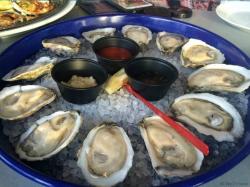Greed And Wanton Destruction Destroyed Alabama's Oyster Harvest
December 27, 2017 | 2 min to read

It is hard to imagine how many oysters were present in Mobile Bay before we got here. It is hard, even, to understand how many there were just 100 years ago. According to AL.com calculations, it is likely we have removed about 1.8 billion adult oysters from the bay in the last century.
Oysters were one of the primary attractions for the earliest Alabamians. Ancient shell middens in Bon Secour, Grand Bay, on Dauphin Island, along Mobile Bay and elsewhere attest to the importance of oysters in the diet, and as an architectural building tool. The native peoples actually lived atop the mounded shells of oysters they had eaten. The mounds, some 20 feet high, helped the early coastal inhabitants get above sea level and the wet, soft ground along the coast. Testing shows that some of those mounds were heaped up more than 6,000 years ago. And a decrease in the size of the shells deposited on those mounds most recently suggests that these earliest people were actually having a measurable effect on the reefs of Mobile Bay long before Europeans arrived here.
We have a more precise knowledge of the modern harvest beginning in 1880, the first year the state kept records. That year, about 327,000 pounds of oysters were tonged from the bay. That is pounds of meat, not including the shell. The harvest quickly ramped up. Just a decade later, in 1890, the harvest was up to 1.5 million pounds, and by 1928 it was up to 1.8 million pounds annually. To put that in perspective, a pound of oyster meat usually contains about 15 oysters, according to estimates from federal officials, meaning the 1928 harvest consisted of around 27 million oysters.
To read the rest of the story, please go to: AL.com
